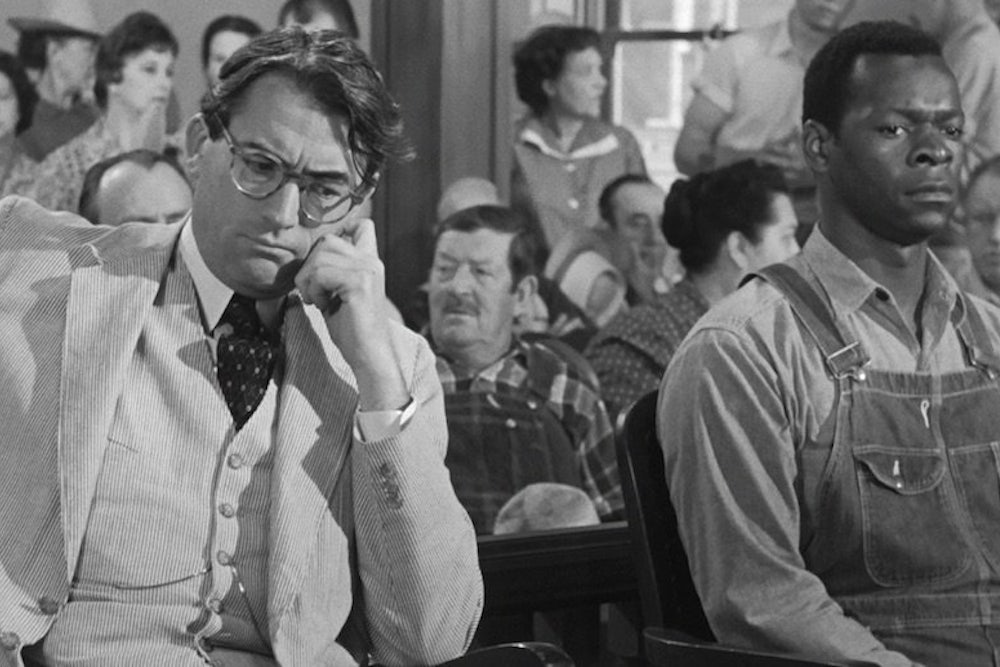The portrayal of Atticus Finch, the lawyer hero of To Kill A Mockingbird, as a racist in Harper Lee’s new novel, Go Set A Watchman, has been variously described as a “bombshell,” “shocking” and a “revelation” in early reviews. The New York Times suggested that the new novel “could also reshape Ms. Lee’s legacy.” Yet scholars who have written on race and the legal system in To Kill A Mockingbird are less surprised. “If you read the book from a racial justice perspective,” Katie Rose Guest Pryal, a novelist and former law professor, commented, “it wouldn’t surprise you that this is who Atticus is.”
In fact, there is a well-established body of scholarship on To Kill A Mockingbird that draws attention to flaws in Atticus’s character. Pryal’s 2010 paper on a “failure of empathy” in the novel argues that Atticus never lives up to his own advice that to understand somebody, you have to “climb into his skin and walk around in it.” She points out that Atticus’s defense of Tom Robinson, a black character accused of rape, is not about understanding Tom Robinson: “Neither the jury nor the audience of the novel have learned anything about Tom: where he lives, what his family is like, how he treats his wife and children and others in his daily life.” His defense of Tom relies instead on convincing them that he, Atticus, is honorable. By playing to white prejudices in a system that consistently benefits whites, his strategy does nothing to “disturb America’s racial caste system.”
In her reconsideration of To Kill A Mockingbird in its fiftieth year of publication, Angela Shaw-Thornburg, a literature professor at South Carolina State University also identified problems with Finch’s “paternalistic and downright accommodationist approach to justice.” She describes teaching the novel at a “minority majority institution” where students are “trying to figure out why they feel unvoiced by the literature they are reading” and she diagnoses the same problem as Pryal: “how little we see of Tom Robinson, whose life and death would presumably be at the center of this story.” She questioned whether the novel was “too dated to be taught in contemporary classrooms.”
The omissions and racially-prejudiced strategies Pryal and Shaw-Thornburg both find in To Kill A Mockingbird chime with the portrayal of Finch in Watchman, which gives us more concrete background about the character. Set in the 1950s, Go Set A Watchman tells the story of Scout, Atticus Finch’s daughter, returning to her hometown as an adult. Her time away from home, living in New York, has changed her perspective. She sees herself transformed “from an overalled, fractious, gun-slinging creature into a reasonable facsimile of a human being.” And she also sees more clearly her father’s bigotry: in this novel, Finch opposes desegregation, rejects the work of the NAACP, and has attended a meeting of the Ku Klux Klan.
These details are new and shocking; but this dimension to Finch’s character is not entirely new. “In the imagination he is much greater than he is in the actual books,” says Ann Engar, a professor at the University of Utah who has written about the novel’s influence on the legal profession: “In the book, for example, Atticus Finch is assigned to defend Tom Robinson. He doesn’t volunteer to do it.” Similarly Pryal found that “whenever I gave talks at conferences on he possibility that Atticus might not be the anti-racist hero everyone believes him to be, people would freak out because they hold Atticus very close to their hearts.”
Engar is interested in how this portrayal of Finch will affect lawyers “of that generation who were really young when that book came out and were inspired to go to law school because of that.” For her, like Thornburg-Shaw and Pryal, the new book emphasizes a dimension of Finch’s character that was already problematic, rather than the adding the problem of race to our reading of him. “I think that it’s already there,” she said responding to early reports about the novel, “But I don’t think that everyone else sees it as already being there.”
It’s worth pointing out that the connection between the two books is not a simple one. Go Set A Watchman follows the same characters as To Kill A Mockingbird and is set 20 years after the events of To Kill A Mockingbird, but of the two novels, it was written first. On one view, this would position To Kill A Mockingbird as the prequel to an until-now unpublished book. Others would argue that it is in fact a very thoroughgoing revision of Go Set A Watchman, and instead of existing side by side, the text published in 1960 replaces the first draft written in the ’50s. Are the two books two installments in the same series about one set of characters in one fictional place? Or are they two drafts of the same novel, which present us with competing versions of the same characters?
The way we read Harper Lee will be shaped by which of those two options we find most convincing. The first option adds weight to the arguments academics have been making about race in To Kill A Mockingbird for years. The second option, meanwhile, leaves Finch’s image somewhat more intact, despite the mounting body of criticism. And it emphasizes that Lee’s publisher wasn’t ready in the 1950s for a novel that showed a daughter’s conflicted relationship with a father she recognizes as racist. Charles J. Shields, the author of Lee’s biography, Mockingbird, sees an image from the first chapter of Go Set A Watchman as an eloquent comment on the reception of the novel in the ’50s. “I think it’s a great metaphor that the train overshoots the station,” he says, referring to Scout’s arrival in Maycomb County, “almost as though the train itself was reluctant to stop.”
